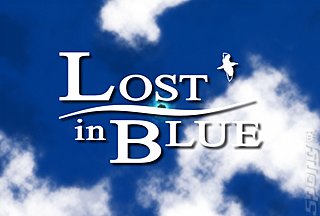Games Database
DS/DSi
Adventure
| Viewed: | 2D Static screen | Genre: | Adventure |
| Media: | Cartridge | Arcade origin: | No |
| Developer: | Konami | Soft. Co.: | Konami |
| Publishers: | Konami
(GB) |
Released: | 11 Nov 2005
(GB) |
| Ratings: | PEGI 7+ | ||
| No Accessories: | No accessories | ||
Summary
Lost in Blue makes full use of the Nintendo system's dual-screen and touch panel interface to create one of the most original and engrossing role-playing titles seen on any format. Assuming control of a young hero who finds himself awash on a seemingly uninhabited island after a disastrous sea incident, the player is charged with escaping from this apparently deserted paradise.
During the course of the adventure, the player will meet a girl who was also stranded in the accident and, together, they must learn key skills in order to survive. As such, Lost in Blue focuses on the pair's efforts at hunting, scavenging for food, and using and making tools as they wander freely around the beautiful locale. Likewise, as the game progresses, so the relationship between the two characters grows as they learn to trust and share their skills with each other.
Where Lost in Blue differs from most role-playing games is in its stunning use of the Nintendo DS's touch screen capabilities. Using the system's stylus, players have full control as they fish, hunt, dig and even milk goats in their hunt for food. These functions are shown as a series of mini-games designed to test the player's reflexes and deftness of touch, with each character offering particular skills which must be exploited.
Success or failure in these missions also affects the narrative flow, with Lost in Blue's story constantly evolving and Lost in Blue boasts several different endings dependent on the relationship between the two characters, their lifestyle, dialogue and the eventual manner of their escape. On completing the game, Lost in Blue will also offer a second adventure seen through the eyes of the female character, significantly extending the game's replay value.
During the course of the adventure, the player will meet a girl who was also stranded in the accident and, together, they must learn key skills in order to survive. As such, Lost in Blue focuses on the pair's efforts at hunting, scavenging for food, and using and making tools as they wander freely around the beautiful locale. Likewise, as the game progresses, so the relationship between the two characters grows as they learn to trust and share their skills with each other.
Where Lost in Blue differs from most role-playing games is in its stunning use of the Nintendo DS's touch screen capabilities. Using the system's stylus, players have full control as they fish, hunt, dig and even milk goats in their hunt for food. These functions are shown as a series of mini-games designed to test the player's reflexes and deftness of touch, with each character offering particular skills which must be exploited.
Success or failure in these missions also affects the narrative flow, with Lost in Blue's story constantly evolving and Lost in Blue boasts several different endings dependent on the relationship between the two characters, their lifestyle, dialogue and the eventual manner of their escape. On completing the game, Lost in Blue will also offer a second adventure seen through the eyes of the female character, significantly extending the game's replay value.












